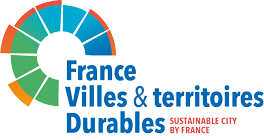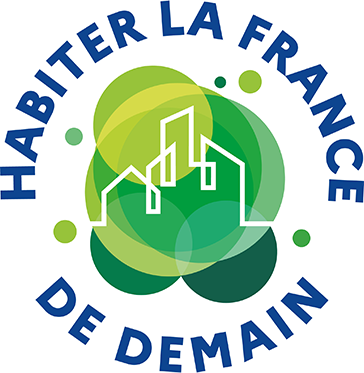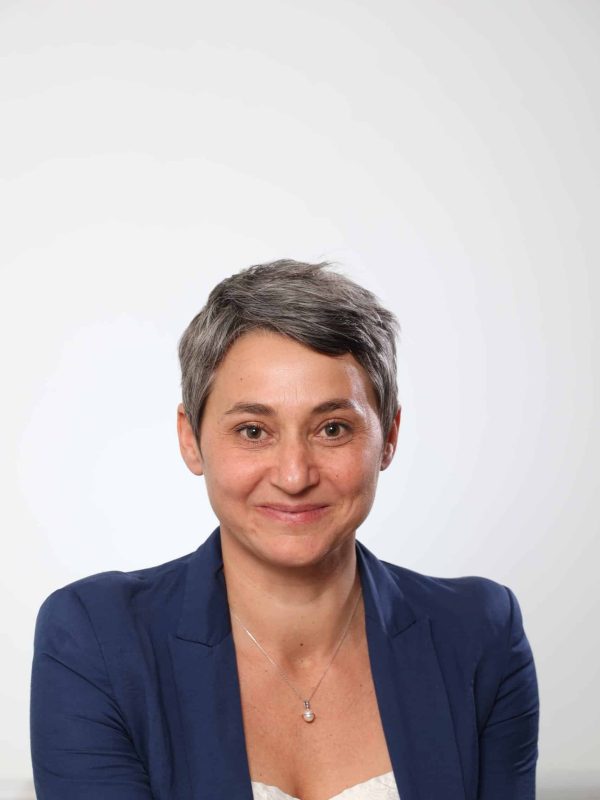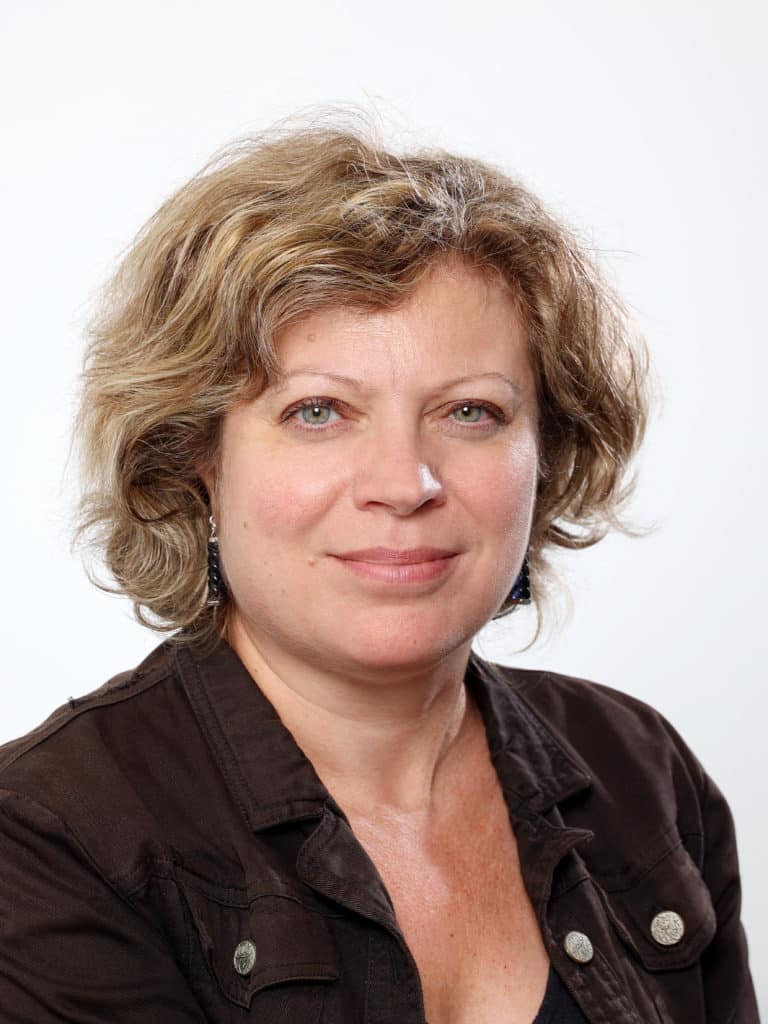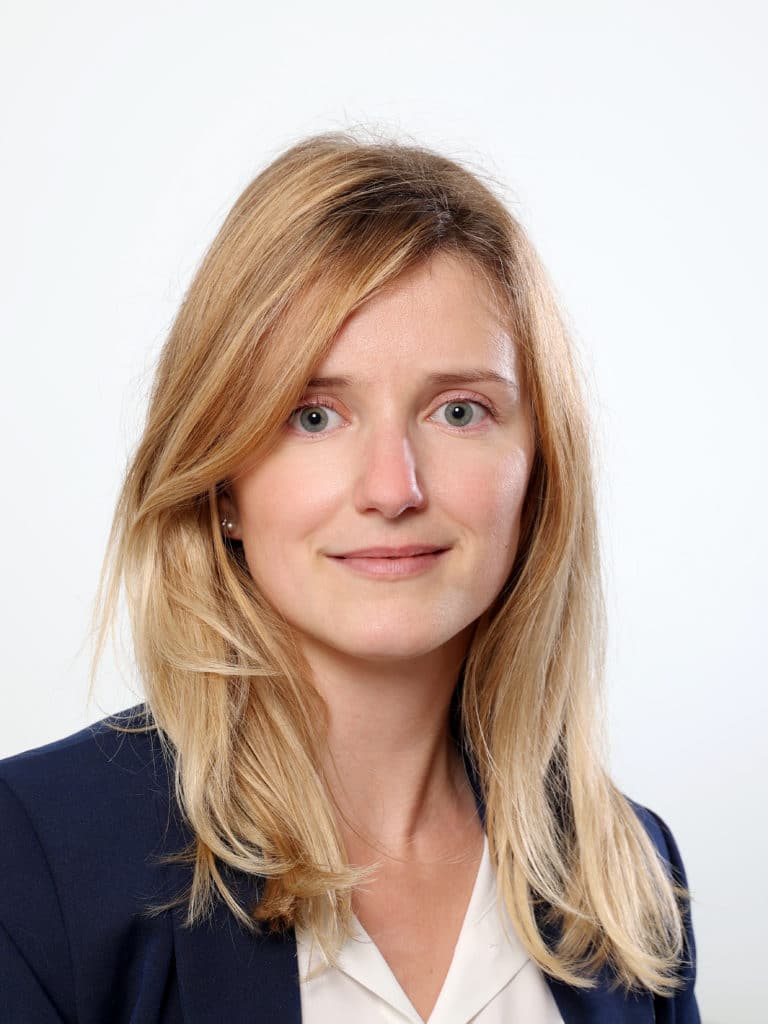Hyperion – Bordeaux
A project proposed by The HQE-GBC Alliance and CERQUAL Qualitel Certification
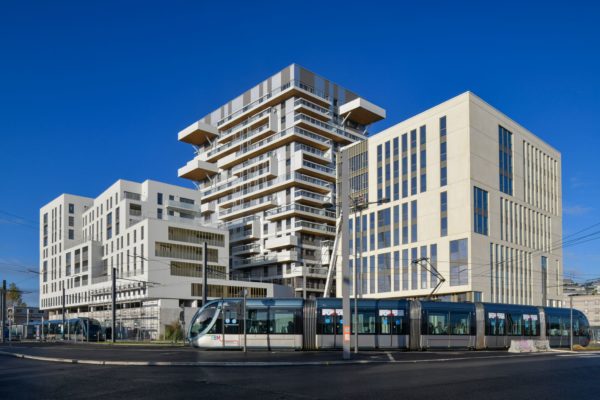
Contributor
Marc Simon, Program Director, Eiffage immobilier: marc.simon@eiffage.com
Description
Construction of a wooden tower of 98 x 16-floor housing units in R+6 on the development territory of the administrative public establishment Euratlantique in Bordeaux.
The central core ( lift and stairs ) serving as bracing is made from reinforced concrete. The wooden structure is made up of wooden beams and columns, as well as CLT (Cross Laminated Timber) floors, and facades made of patent-pending "Hypermob" TM wood-frame walls.
With a 50-metre high structure, this residential tower is the highest wooden tower in Europe to date. It is a technical and environmental achievement with a carbon footprint of just 870 kg CO2 eq/sqm SDP (Floor Area), equating to some 45% less than a traditional building.
The construction of this tower required more than 1,400 cubic metres of wood, the origin of which is certified as being from New Aquitaine by a control office that ensures traceability through a wood label.
- Construction
- Quality of housing
- Materials
- Énergie
- Housing
Factsheet
- Metropolis
Distinction
Media
Project evaluation*
based on contributor declaration
Criteria n°1: SUFFICIENCY
The project itself has not artificially altered the soil since it is constructed on the disused site of an outdoor car park. The suspended garden located in the centre of the unit also contributes to adding greenery to the neighborhood as well as offering a fresh central island. The project contributes also to the fight against soil artificialisation by rebuilding the city on the city and by bringing a share of biodiversity to a plot of land that was previously devoid of this.
The project holds the Biosourced level 3 label thanks to the use of more than 1,400 cubic meters of wood, and more than 100 cubic meters of Fermacell gypsum fiberboards. The Hyperion tower is the subject of an LCA (Life cycle assessment), it concentrates the equivalent of 1,000 tonnes of CO₂, i.e. a volume comparable to 9 years of energy consumed for such a residential building. Over the entire life cycle of the building, the project will save almost 15 tonnes of CO₂ per housing unit.
In terms responsible use of materials, all of the wood selected is certified with eco-responsible labels primarily sourced from forests in New Aquitaine. Its origin has been given a “forest origin label” certified by Product DNA allowing the essential traceability of the carbon footprint, from the exploitation of the forests to the supply of the building site.
Within the framework of the Sekoya digital platform dedicated to innovation and the identification of low-carbon materials and processes, the start-up Circouleur, based in Blanquefort (33), was selected by the Eiffage group. Circouleur, which produces eco-responsible paints based on recycled products and paints, was involved in the Hyperion project, thus contributing to obtaining the BBCA ( Low Carbon Building) label.
The bioclimatic design of the building allows it to benefit from optimal sunshine throughout the year, and the deep balconies act as solar protection. The envelope, as well as the shape and compactness of the buildings, allow for a reduction in energy losses from the facades in order to achieve the Bbio objective of -20%.
Heating and domestic hot water production throughout the entire accommodation comes from a district heating network using a clean, local, a renewable resource from the treatment of household waste by the Energy Recovery Unit in Bègles (33).
This project has obtained the E3C2 energy and carbon performance level, which aims to halve the carbon footprint of new buildings. The wooden tower has a carbon footprint of 870 kg CO2 equivalent/sqm, i.e. 45% lower than its equivalent in traditional construction. With its 1,400 cubic meters of solid wood, the project will sequester at least 1,400 tonnes of CO2 over its lifetime.
This wooden tower has also obtained the BBCA ( Low Carbon Building) label.
Hyperion is recognised by the State as a “Sustainable City Industrial Demonstrator”. As such, the project is supported under the PIA future investment program operated by the French Environment and Energy Management Agency (ADEME).
Thanks to the fact that the accommodation is heated by the district heating network, there is no individual heating production such as a boiler, for example, which means that there is less maintenance work to be done. In addition, each flat is equipped with the Domoconso app for monitoring and displaying water and energy consumption, which can be accessed via smartphone.
Criteria n°2: INCLUSION
A host of public meetings were organised to discuss the project and a show home has been designed within the neighbourhood. This meeting place houses models of the neighbourhood’s development and educational materials designed to explain the project to residents.
During the Woodrise days organised in Bordeaux, Eiffage Immobilier also took part in explaining the project through educational materials and tours of the tower.
The project includes 35% social housing units within the remit of the project. This housing is distributed throughout the different layers of the project in order to create a real social mix. The Hypérion program has received the 2019 “Pyramides d’Argent” New Aquitaine Urban Mixed Use Award.
In addition to the housing, the Hypérion complex includes an office building and shops at the foot of the building.
An integration clause was signed between EIFFAGE IMMOBILIER SUD OUEST and the EMPLOYMENT HOUSE OF BORDEAUX, whose mission is to animate the territory, to coordinate the various initiatives in terms of access to employment and to set up synergies between the various local employment and integration players in order to provide a value-added service to companies and job seekers.
The project is due to be delivered in Q2 2021.
The project fully complies with the aim of reducing GHG emissions, a priority area set out by political undertakings. The E3 C2 level contributes to a saving in energy consumption which favors the comfort of the inhabitants in winter but also the comfort in summer thanks to the low inertia of the building.
The NF HQE (high environmental standards) 9* certification guarantees occupants an optimised indoor air quality thanks to the use of A+ certified materials and thus contributes to the reduction of volatile components.
Before occupants move in to their homes, an indoor air quality test will be conducted by an approved organisation.
The Hyperion complex is a demonstration project which aims to promote low-carbon construction and the development of new environmentally friendly building solutions.
Criteria n°3: RESILIENCE
As part of the development of the Bordeaux Euratlantic National Interest Operation, the Bordeaux Euratlantic Public Planning and Development Authority has committed itself to develop a signal project through the call for projects for the construction of a wooden tower, a marker of support for the wood industry, innovation in this field and in favour of a low-carbon territory.
The Hyperion tower is part of the consideration of sustainable development issues that dates back to 2008 with the first carbon assessment published in the Eiffage Group’s annual report.
In 2007, Eiffage’s Research & Development laboratory, known as “Phosphore”, designed a systemic approach to urban development, including the projected low-carbon transformation of certain neighbourhoods in Strasbourg and Grenoble. This founding research work was applied to Smartseille in 2012 and then in 2017 in the Chatenay-Mallabry eco-district. In 2020, the Group adopted the European Union’s roadmap on corporate climate reporting and is aligned with the 2nd trajectory adopted by the Paris Agreement in 2015. As such, we are following and adopting the recommendations of the G20 Financial Stability Board’s Task Force on Climate-related Financial risk Disclosures (TCFD) on non-financial reporting.
Criteria n°4 : CREATIVITY
The wood construction of this building contributes to the economic development of the wood industry as a whole, notably through the supply of wood sourced from regional forests. The prefabricated construction of the 141 custom-made balconies is being carried out by a local company.
Savare company became part of Eiffage Construction in 2018, for its expertise in the industrial production of wood components. Savare produced all the timber frame walls for the Hyperion tower, and today it continues to produce for new timber construction markets and thus contributes to the reindustrialization of our region.
Prefabricated wa’ood rooms that also reduce the carbon footprint of construction have been installed across a portion of the project.
Finally, in response to changes in our business, our employees have received specific training in the wood industry.
Eiffage Immobilier also supported the Cré’Atlantique Fund for this project, with the aim of supporting creativity in the region, providing access to art for as many people as possible and contributing to the development of sustainable economic models in the creative sectors. This action strengthens public action in favor of art and economic development in the region.
It is the tallest residential timber building in Europe.
This achievement required the development of a timber frame wall under category A ATEx ( Experimental Technical Opinion) suitable for 3rd and 4th family buildings up to 50 meters high as well as for ERP (facilities receiving the public) up to 28 meters. The “Hypermob” timber frame wall has even been patented.
Last criteria: potential of replicability ?
The project has yet to be replicated, but the experiments and expertise on show are being fed into current low-carbon construction projects.
The prefabrication of the construction, with the wood-frame walls, balconies and prefabricated wa’ood bathrooms manufactured in the factory on the industrial model, easily allows the replicability of the construction method. In addition, the investment fund provided by the French Environment and Energy Management Agency (ADEME) is intended to duplicate the engineering of this project with a view to multiplying the number of wood-based collective housing buildings.
